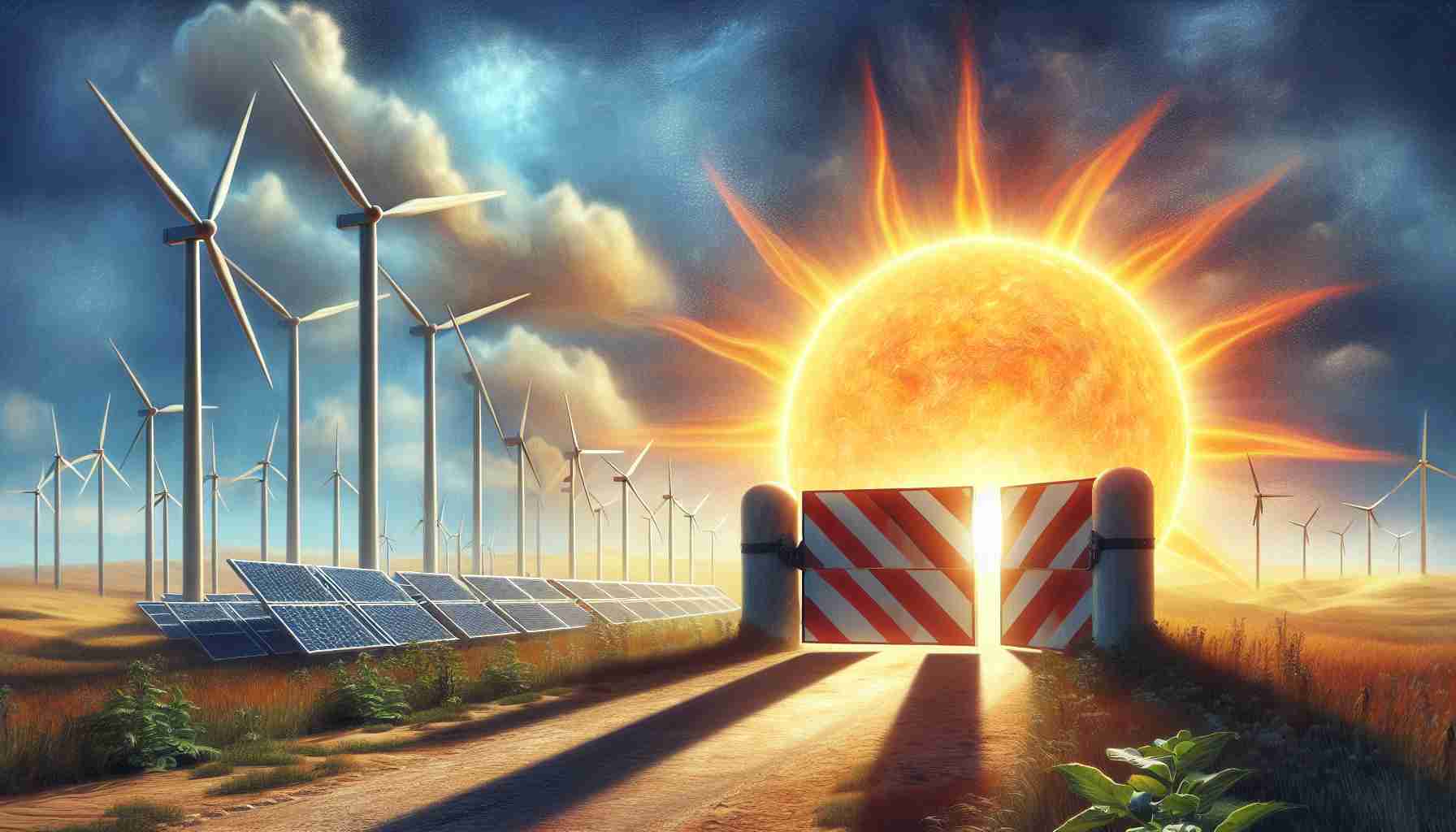
Amidst California’s push for sustainable energy, resistance is brewing. Some rural communities are raising concerns over the rapid approval of wind and solar projects.
Assemblymember Buffy Wicks from Oakland is advocating for streamlined permitting to expedite the development of renewable energy infrastructure, given the urgent need to address climate change. Addressing a recent hearing focused on this issue, Wicks stressed that government actions must improve efficiency and responsiveness to public needs.
One focal point of her tour was the impressive Desert Peak battery storage facility in Palm Springs, which is designed to support renewable energy efforts by providing 700 megawatts of power to approximately 140,000 homes.
Despite such advancements, rural apprehensions loom large. Recent years have seen setbacks as local communities express fears that renewable energy sites could threaten delicate ecosystems and agricultural lands. Planning restrictions have even been enacted in places like San Bernardino County to safeguard against the potential impacts of large-scale projects.
Additionally, recent incidents involving battery storage facilities catching fire have fueled worries about safety, raising red flags amid public calls for faster deployment of renewable solutions. Industry representatives argue that technology has advanced significantly, improving safety measures.
As California strives for a carbon-neutral future by 2045, experts underline the urgency for a balance between swift implementation and the protection of community interests.
California’s Renewable Energy Dilemma: Balancing Progress and Community Concerns
As California accelerates its shift towards sustainable energy, a tension has emerged between the rapid deployment of renewable projects and the apprehensions of rural communities. While state leaders emphasize the need for immediate action to combat climate change, local residents are voicing worries about the potential consequences of large-scale solar and wind infrastructure on their environments and livelihoods.
Streamlined Permitting vs. Community Concerns
In the face of urgency, Assemblymember Buffy Wicks of Oakland has been advocating for streamlined permitting processes. During a recent hearing, she articulated the necessity of enhancing the government’s efficiency to meet public needs while addressing the climate crisis. The focus on rapid project approval aims to rid the state of bureaucratic bottlenecks that can delay critical renewable energy initiatives.
However, this push for expedited development has met resistance from rural communities concerned about the environmental impact. These areas are increasingly fearful that the placement of renewable energy sites could disrupt fragile ecosystems and encroach on agricultural lands. In response to these fears, some regions—like San Bernardino County—have begun implementing planning restrictions to mitigate potential negative effects from these projects.
Innovations in Renewable Energy Storage
A highlight of recent advancements in California’s renewable energy sector is the Desert Peak battery storage facility in Palm Springs. This facility is a crucial player in the state’s renewable efforts, boasting the capability to provide 700 megawatts of power, sufficient to supply around 140,000 homes. Battery storage technology is essential for managing the intermittent nature of solar and wind, allowing excess energy generated during peak production times to be stored and utilized later.
Yet, concerns persist. Recently reported incidents of battery storage facilities catching fire have raised alarms about safety protocols and risk management. While industry representatives insist that technological innovations have significantly improved safety measures, the community’s skepticism remains a hurdle to widespread acceptance.
Weighing the Pros and Cons
The push for renewable energy in California comes with its own set of advantages and challenges:
Pros:
– Environmental Benefits: Transitioning to renewable energy sources contributes to reducing greenhouse gas emissions and combating climate change.
– Energy Independence: Increased reliance on local renewable sources can decrease dependence on imported fossil fuels.
– Job Creation: The renewable energy sector has the potential to generate numerous job opportunities in installation, maintenance, and manufacturing.
Cons:
– Ecosystem Disruption: Large-scale projects may harm local wildlife and disrupt delicate ecosystems.
– Community Resistance: Local opposition can slow down project approvals and lead to conflicts between state goals and community values.
– Safety Concerns: The risk of accidents, such as battery fires, could deter support for new projects.
Market Trends and Future Predictions
As California strives towards its ambitious goal of achieving carbon neutrality by 2045, the interplay between rapid energy project deployment and community stakeholder engagement will be critical. Industry experts predict that future trends will likely include:
– Enhanced Community Involvement: Stakeholder dialogues may become more common to ensure that local concerns are addressed before projects are approved.
– Technological Innovations: Ongoing advancements in energy storage and solar technology may improve safety and efficiency, fostering greater public confidence.
– Policy Revisions: Anticipated changes in state regulations could reflect a more rigorous approach to environmental protections without stifling renewable energy growth.
California’s journey towards a sustainable energy future is a complex dance of innovation, policy, and community engagement. As attitudes evolve, finding a balance that satisfies both the state’s renewable energy goals and the concerns of local communities will be essential for long-term success.
For further information on California’s energy initiatives, visit California Energy Commission.



